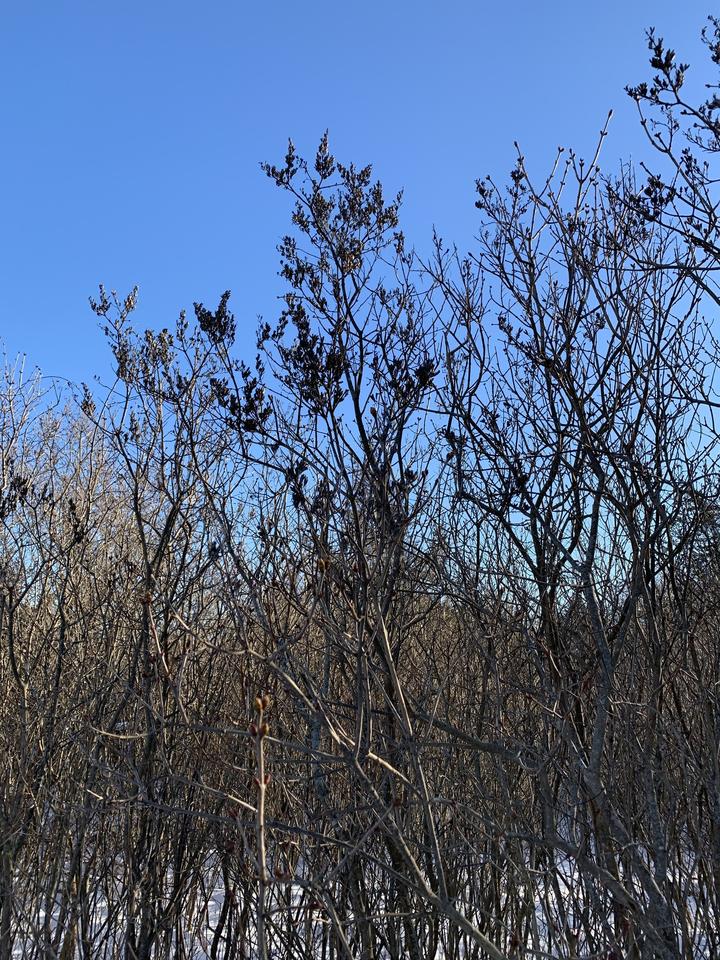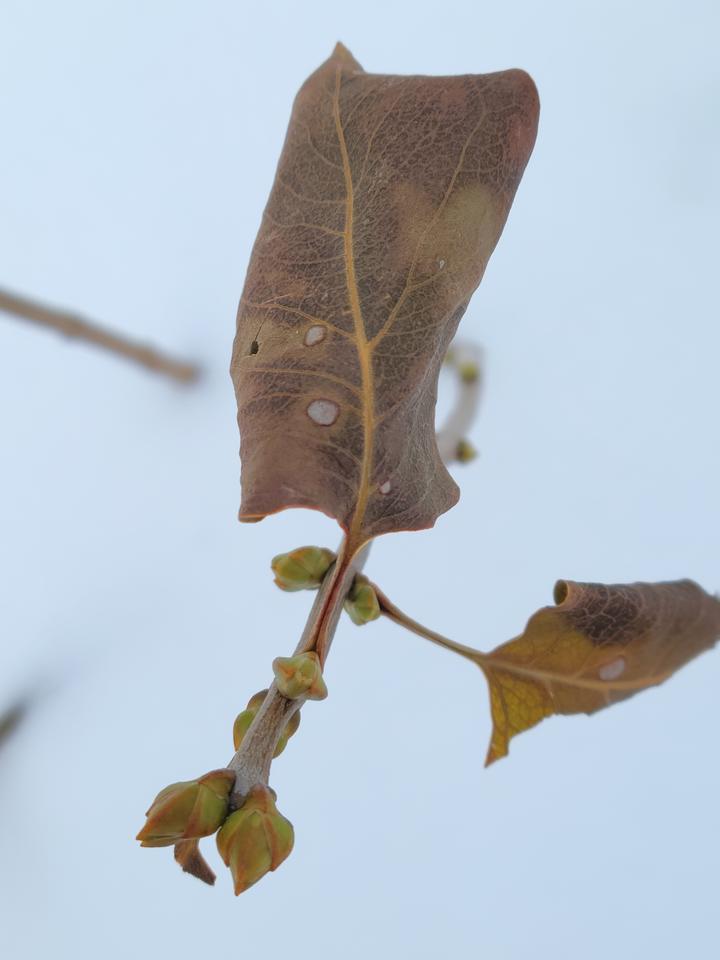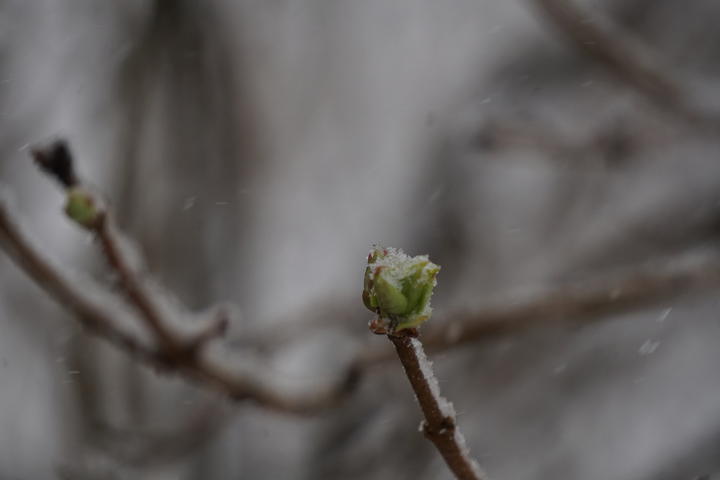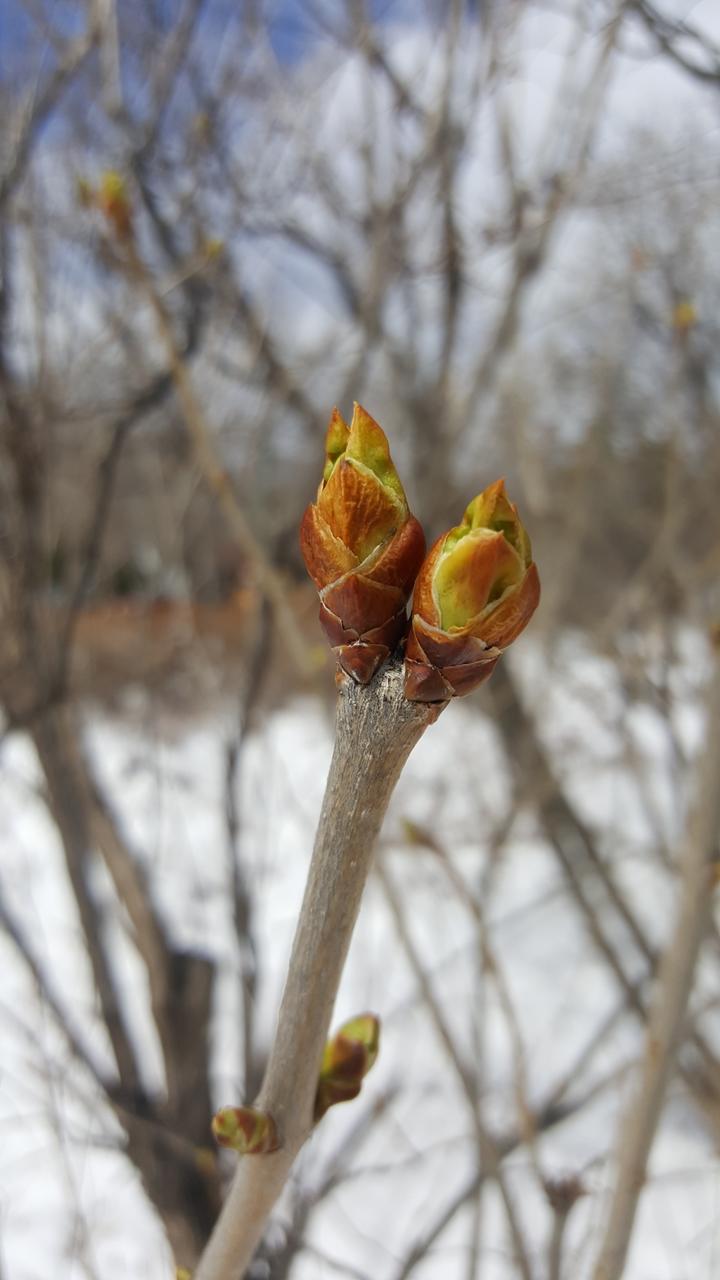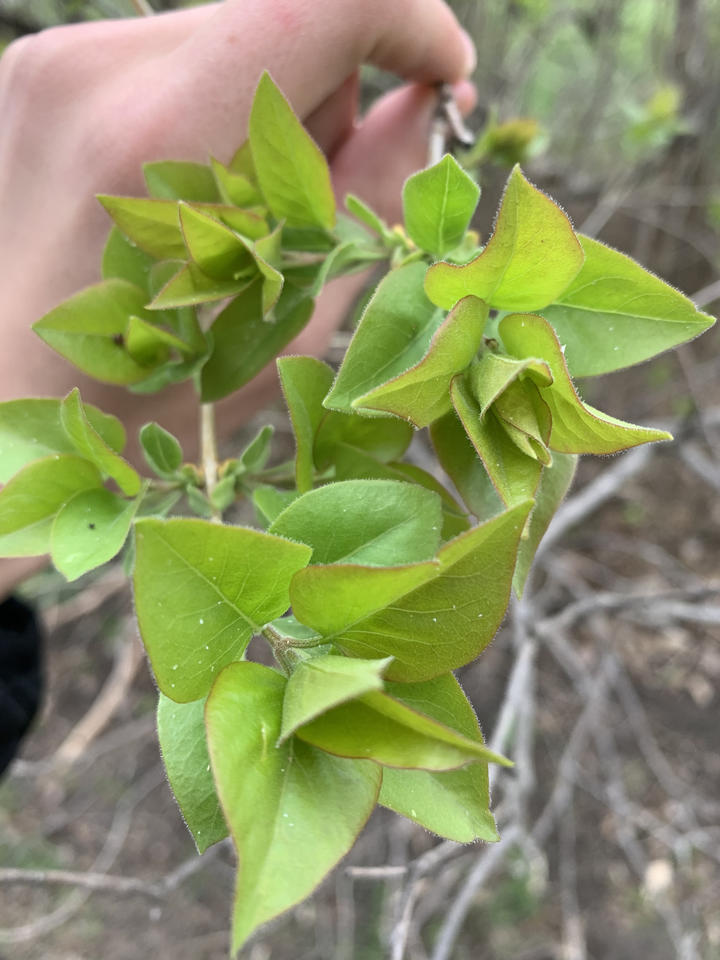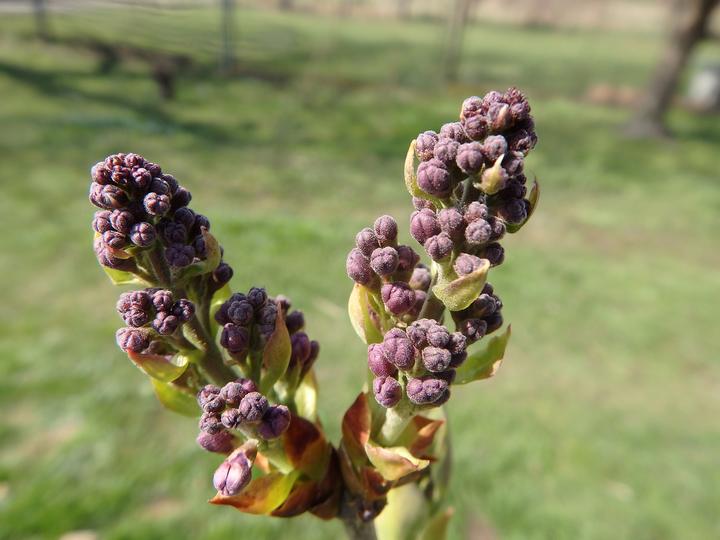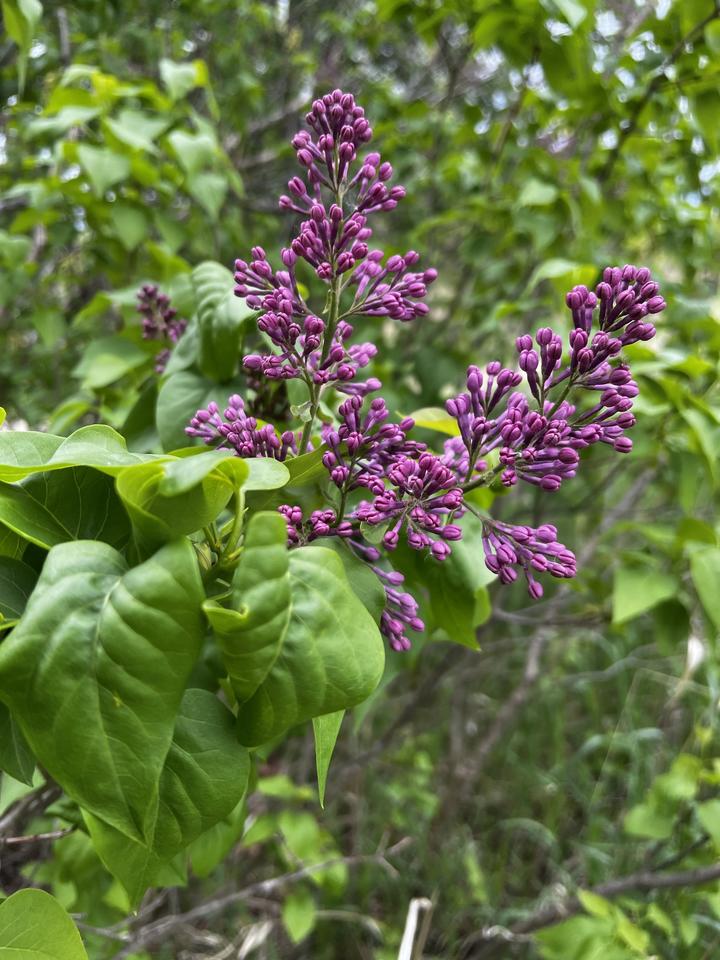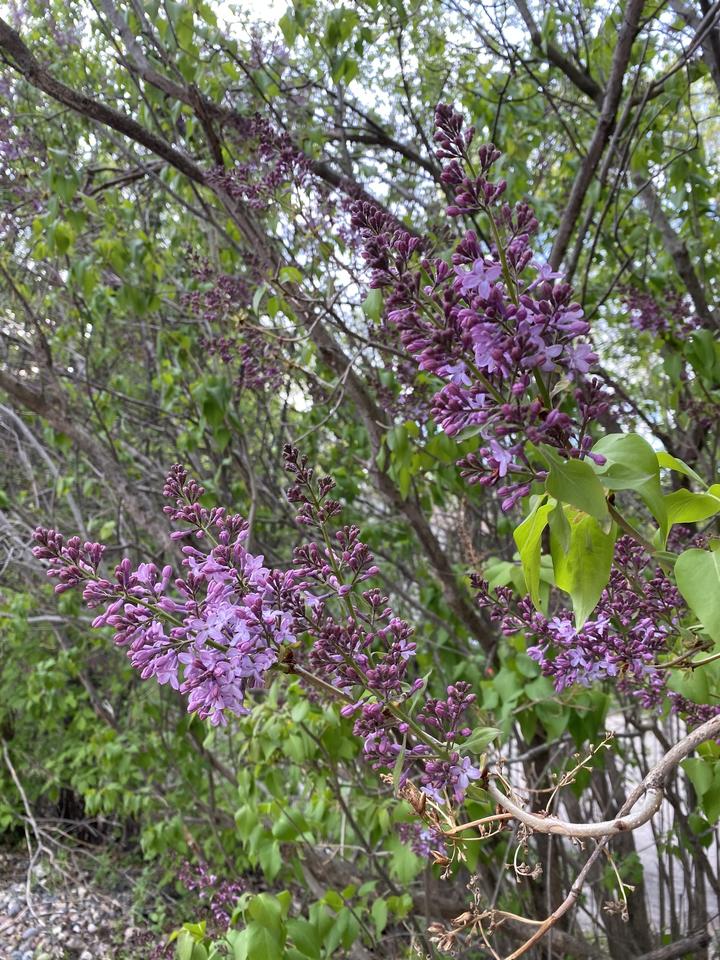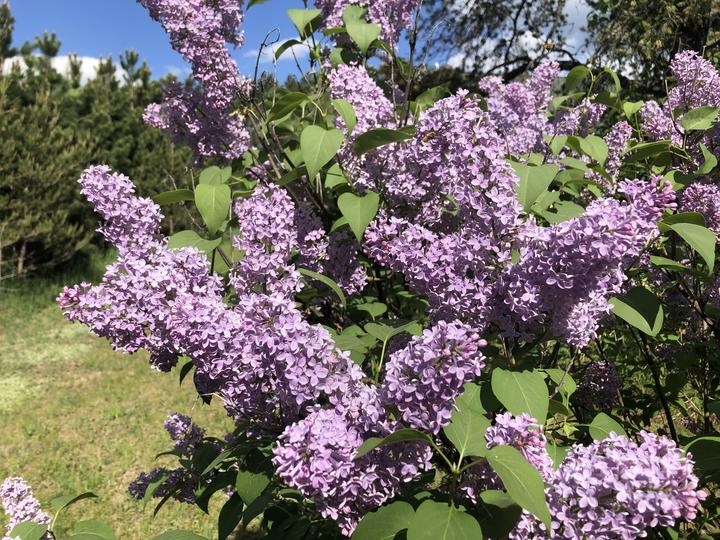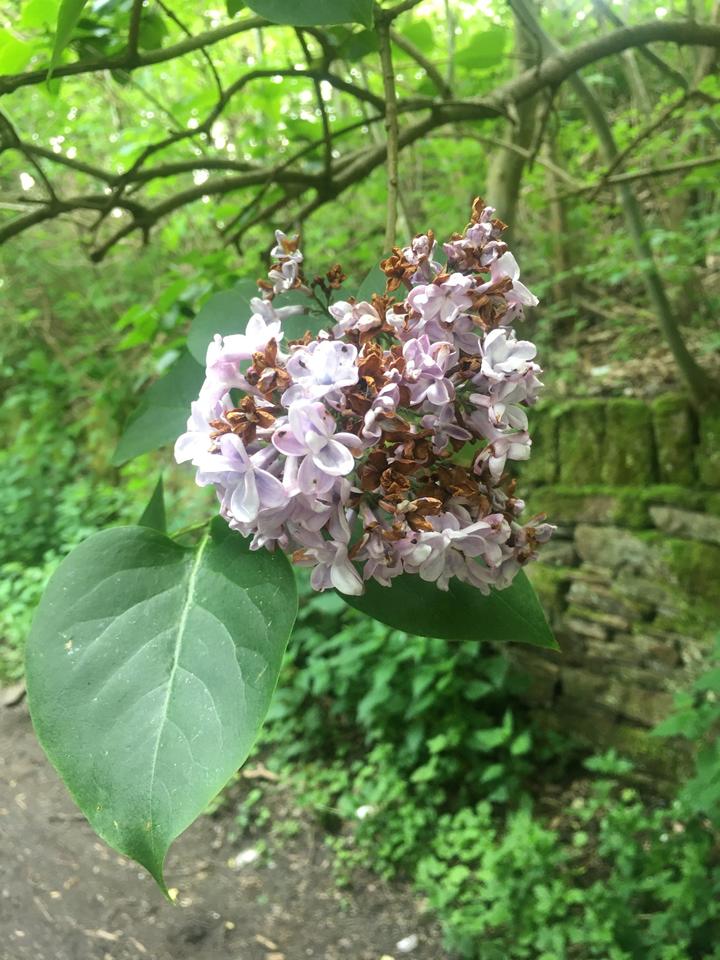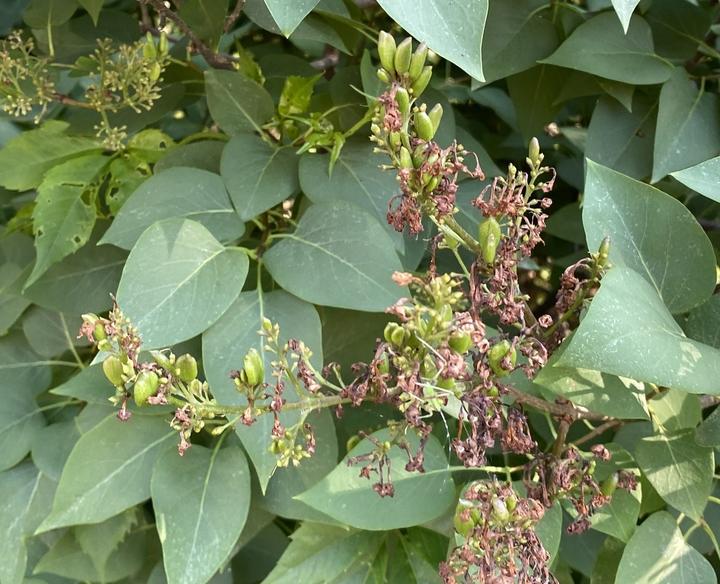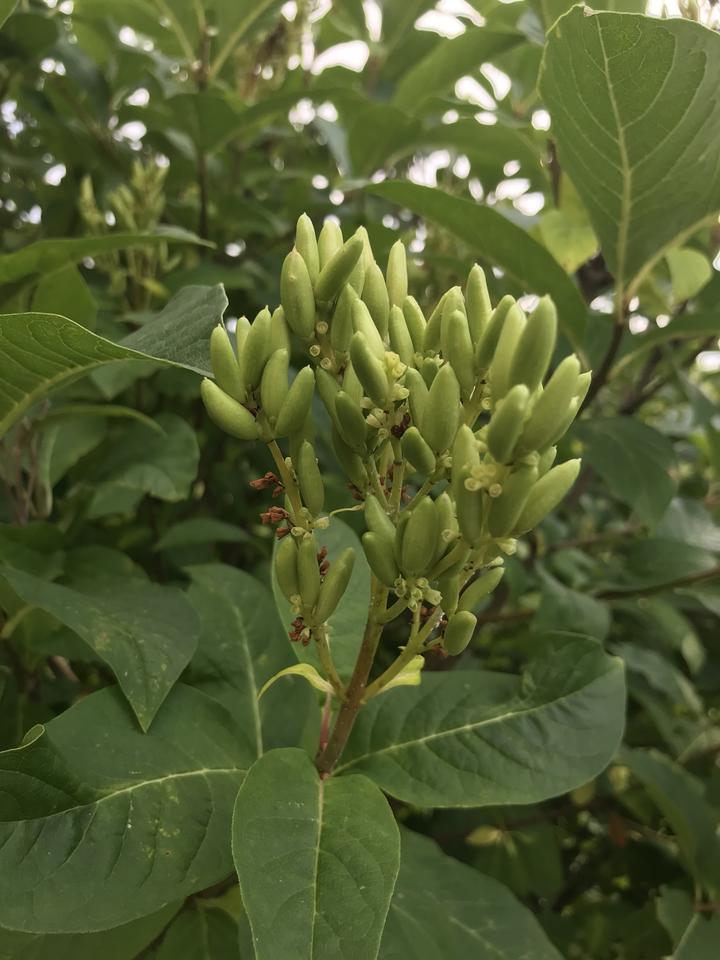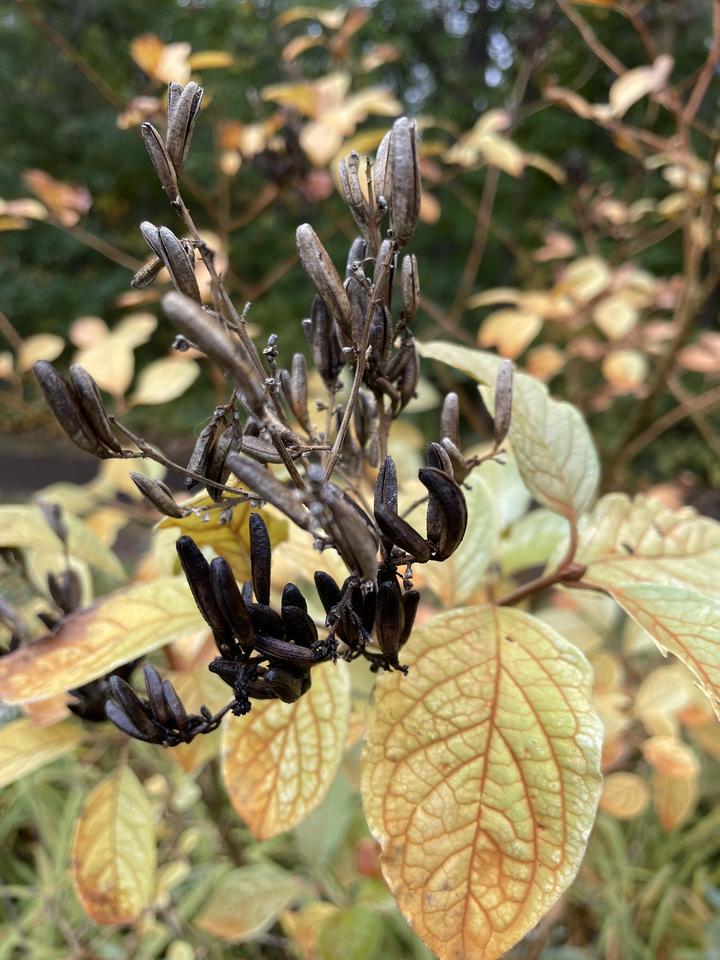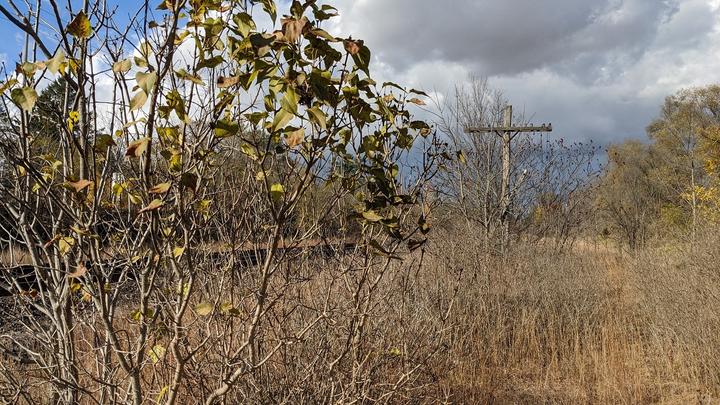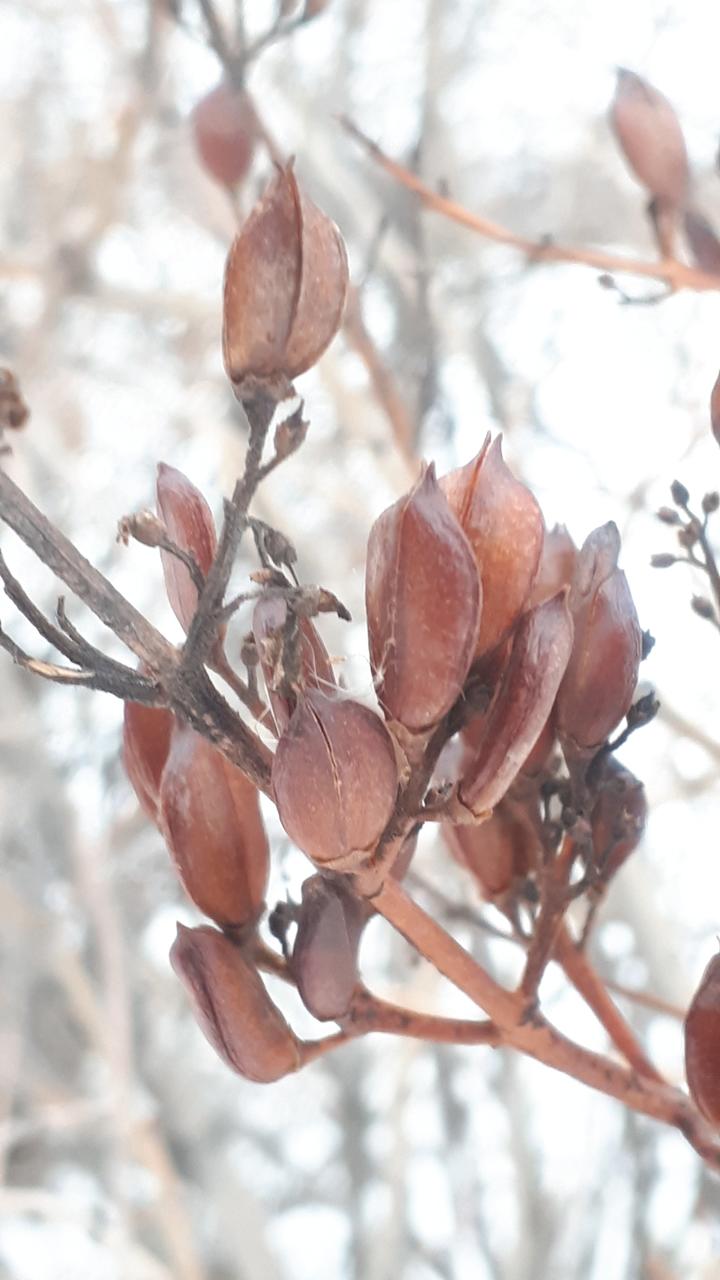More names for this plant
Latin (or scientific name): Syringa vulgaris
The scientific community has a convention of assigning agreed-upon Latin names to every kind of organism. Using scientific names helps people communicate confidently about the same organism and organize lifeforms based on how closely related they are.
Page contents
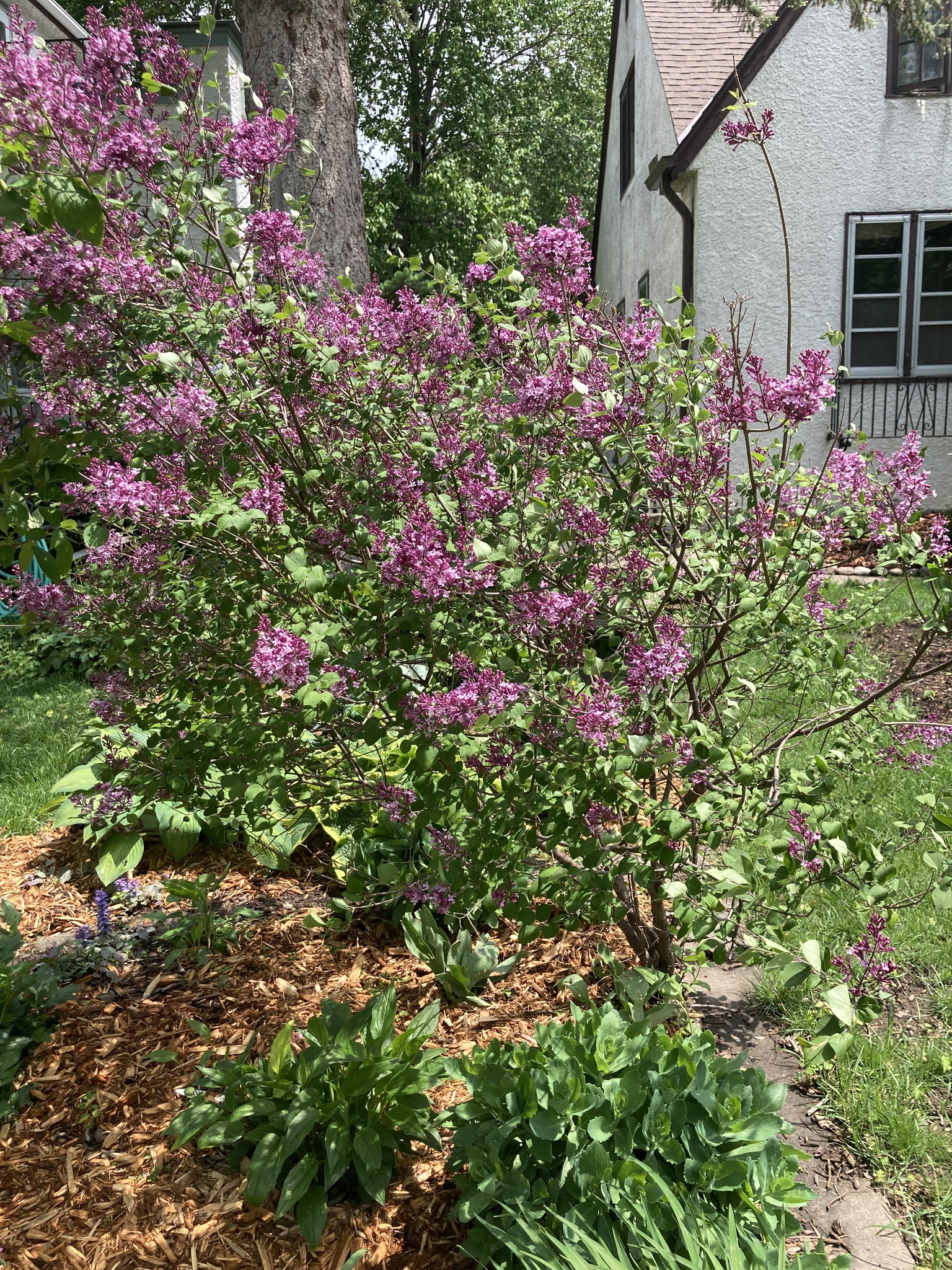
May 30, 2022, Hennepin County, Minnesota
Photo © alcolli, some rights reserved (CC-BY-NC)
iNaturalist observation
About the common lilac
- The common lilac is a woody shrub with heart-shaped, opposite leaves. It can grow between twelve and sixteen feet tall.
- Lilacs produce fragrant flowers that are purple, white, or pink.
- In Minnesota these flowers usually bloom sometime in May and continue to bloom for roughly two weeks.
- Lilacs have an important place in the world of phenology and participatory science. Dating back to the 1950s, the US Department of Agriculture initiated a program designed to monitor phenology of cloned lilac plants, with the help of volunteer observers. Today, volunteers continue to observe lilacs (cloned as well as non-clone plants) using Nature's Notebook, a project of the USA National Phenology Network.
- Fun fact: The common lilac is part of the olive family.
Visual guide to phenology
Watch for the appearance of leaves, flowers, and fruits. Take notice of when flowers open and fruits ripen.
Note to observers
This page explains general clues to watch for when observing common lilac phenology. However, this page does not instruct observers on how to identify this plant or collect data in a standardized way.
- For help with identification, see Minnesota Wildflowers.
- For guidance on collecting data, see Nature’s Notebook.
Graphs and historical data
Note: The Orientation Center provides a map, as well as information on reading graphs; interpreting summary statistics, who collected the data and how; and how to download datasets for independent exploration.
Flowering
- Earliest: May 7 (occurred in 1998)
- Average: May 21
- Latest: June 3 (occurred in 1996)

Leaf budbreak
- Earliest: March 23 (occurred in 1987)
- Average: April 15
- Latest: May 4 (occurred in 1950 and 1956)

Full flowering
- Earliest: April 25 (occurred in 1987)
- Average: May 12
- Latest: May 26 (occurred in 1950)

Keep exploring Season Watch
Keep exploring Season Watch
Co-author: Lynsey Nass, Minnesota Master Naturalist
